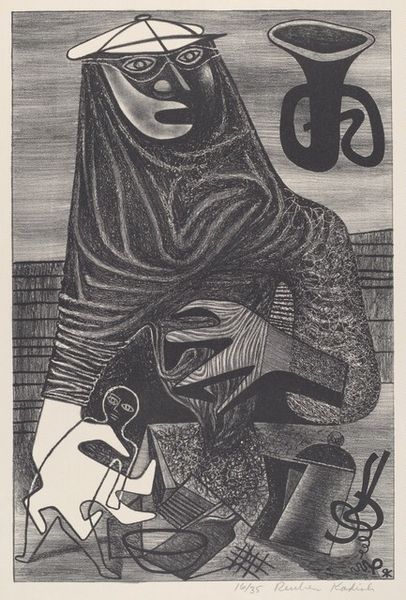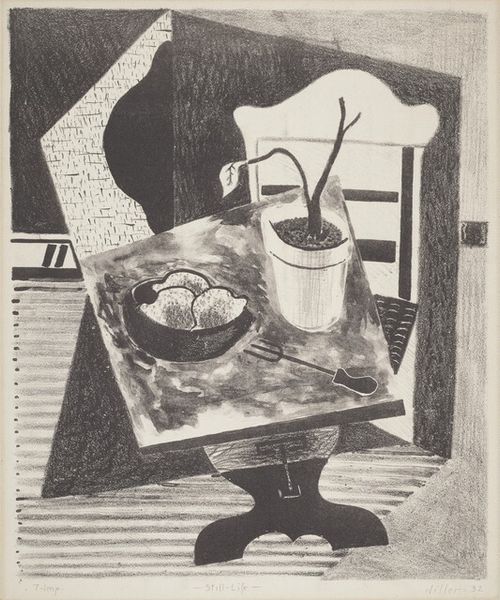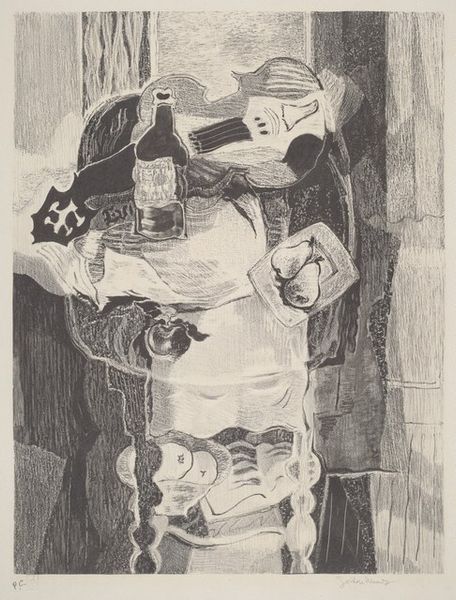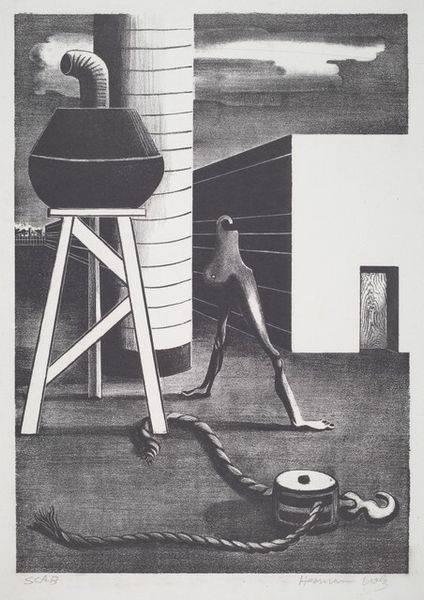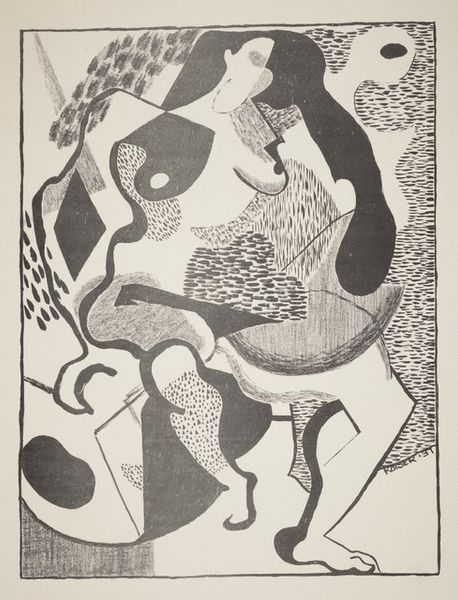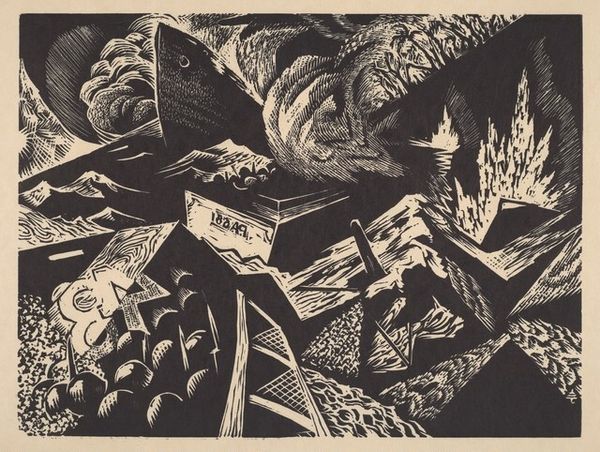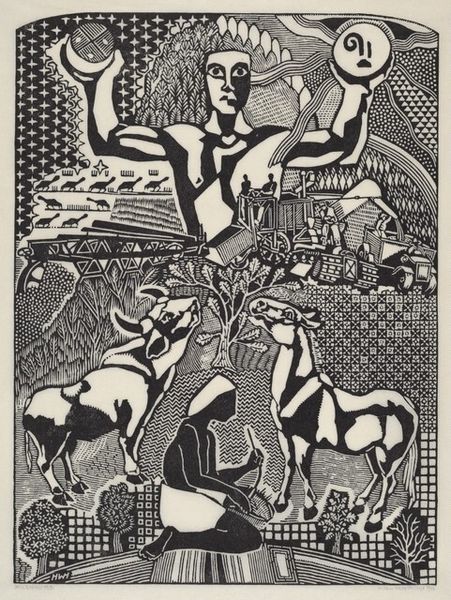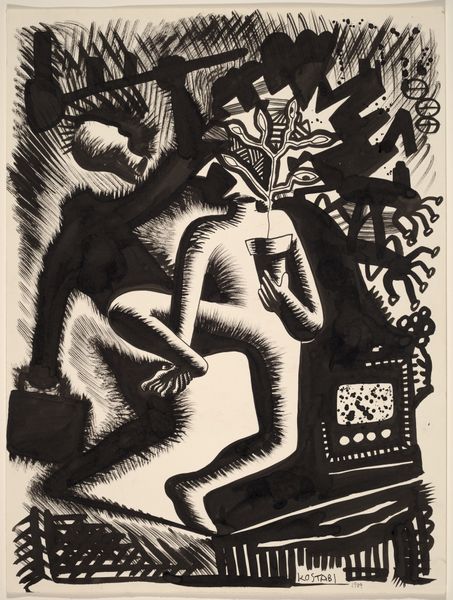
print, graphite
#
precisionism
# print
#
graphite
#
modernism
Dimensions: image: 26.4 x 20.2 cm (10 3/8 x 7 15/16 in.) sheet: 40 x 28.6 cm (15 3/4 x 11 1/4 in.)
Copyright: National Gallery of Art: CC0 1.0
Editor: So, here we have Louis Lozowick’s "Breakfast," a graphite print from 1929. There’s a kind of stillness to it, a certain... geometry. What do you make of it? Curator: I see a carefully arranged still life, yes, but I also sense a cultural encoding. The objects aren't just things; they're imbued with meaning, even a sort of memory. Notice how the composition emphasizes hard edges and sharp shadows. It speaks of a world striving for order. Does anything in particular stand out for you? Editor: Well, the embroidered runner jumps out. It feels so…precise. It’s almost aggressively patterned, which strikes me as a contrast to the natural forms of the fruit and eggs. Curator: Indeed. Think about that embroidery as a visual representation of domesticity and tradition – even aspiration, right? How do those little squares map on to this idea of order? It also functions as a screen between things. Where does your eye want to land? Editor: My eye definitely bounces all over. The way the light hits each object forces you to really observe each thing, like that strange salt shaker shaped like a bird, sitting behind the textile. Curator: Exactly. Lozowick used that technique in order to help us see objects that might otherwise seem “ordinary” in a new way. It is so characteristic of the time, don't you think? Even the shadows function as tangible entities, reinforcing that idea of objects with history or a certain story to tell. The print embodies that psychological weight that images carry and accumulate through time. What are you left pondering? Editor: I guess I’m thinking about how even mundane objects can carry a history within them and point towards our broader cultural memory. Curator: Precisely! The still life as more than just what it appears to be… food for thought.
Comments
No comments
Be the first to comment and join the conversation on the ultimate creative platform.
